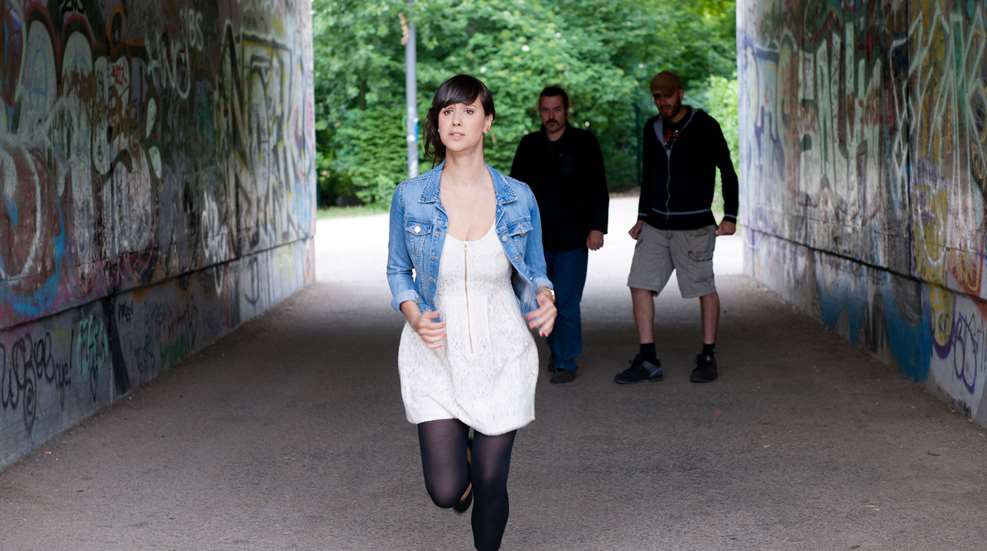
When it comes to personal safety, knowledge is power. The more you know about how violent situations develop, the better you’ll be able to avoid them and keep yourself safe without having to resort to using your firearm. To that end, you should familiarize yourself with the two main types of violence: social and asocial.
Social Violence
Social violence is, at its core, about human relationships. It’s not exactly predatory, but it can certainly be dangerous. In the animal kingdom, social violence takes place within the same species. Think mama wolf nipping baby wolf to teach her how to behave; a bull elk chasing off younger bulls who try to move in on his cows; an old elephant being forcibly driven from his herd when a new elephant takes over; bighorn rams butting heads in an attempt to establish dominance over each other. These are all same-species fights and physical struggles that “solve” social problems.
In humans, social violence is the same. It is a competition, and just like in the animal kingdom, it’s usually about establishing dominance or sorting out a pecking order, teaching someone a lesson, securing breeding rights (impressing women), or showing off in order to gain social status. This will include things like bar fights over a girl or a perceived slight, gang-related territory disputes, playground bullying, “you don’t belong here” beatdowns, “you can’t talk to me like that” slaps, and other types of physical violence that people use in an attempt to gain or protect their social status. It’s almost never lethal, at least not intentionally.
Social violence is far more common among men, particularly young men, than it is among women. Thus you aren’t likely to be a part of it, but you could certainly be caught in the middle of it or be hurt as a bystander, which is why you need to be able to spot it when it’s developing and get out of the way.
The big clues that you’re dealing with social violence are 1) There’s usually some buildup while the perpetrator hypes himself up or talks himself into doing whatever he’s about to do and 2) There’s usually some communication involved. There’s almost always a warning along the lines of “Shut up or else” or “You’d better get out of here if you know what’s good for you.” The guy who’s about to turn violent has just told the would-be victim exactly how to avoid violence. Follow his instructions and you can usually get out of there without a scratch.
The good news about social violence is that you can almost always get out of it before it happens if you follow the rules of whatever game you’ve found yourself in. Read the room. Back down and let the perpetrator look like the big man in charge and you’ll likely be OK.
Predatory Violence
Predatory or asocial violence is a different thing. In the animal kingdom, this is violence across different species. It is the lion chasing the gazelle; the wolf pack taking down an elk; the housecat playing with a mouse. It’s mostly about resources—primarily food—but can also be about an animal just fulfilling its nature, as in the case of the cat playing with the mouse it might or might not bother to eat.
In the human world, predatory violence includes things like robberies at knifepoint, murders, rapes, and all the other horrible things criminals do to prey on the innocent. As in the animal kingdom, human predatory violence is about either resources (the bad guy wants something you have) or about the violence itself (the bad guy enjoys hurting people). While social violence is about competition and status, predatory violence is about destruction.
As a woman, this is the type of violence in which you are statistically more likely to be involved. The good news is that depending on the situation, you can often head off predatory violence before it starts. You do this by making yourself look like you won’t be an easy victim, which will hopefully cause the violent actor to bypass you. We often call this “failing the interview,” and failing the bad guy’s interview is the best possible way to prevent predatory violence before it starts. Most of the time you won’t realize you’re being interviewed; “failing the interview” is more a matter of how you conduct yourself in general.
Unlike social violence that comes with clues that it’s about kick off and communication that lets you know how to get out of it, predatory violence is different. You can deter it by failing the interview, but if that fails and a criminal picks you as a victim, you’re unlikely to know that anything is happening until it begins. Most predatory attacks are a surprise—the deer doesn’t know the mountain lion is even there until the chase has begun. It might start with the threat of violence, but once the actual violent part of the crime is in process, there’s no way to stop and reverse predatory violence.
This is not to say that you need to pull your gun in every situation, because there are many occasions where a victim can escape, create a scene that causes the predator to abort his attack, or satisfy the predator by giving him what he wants during the threat stage. This is all possible, depending on the situation, in the period between when the criminal has made his intention clear by threatening violence (“give me your wallet or I’ll stab you”) and when he has actually kicked it off (the stabbing has started). But once it’s begun, he will continue the violence as long as he wants or needs to unless he is physically incapacitated. This is what your firearm is for. This is in contrast to social violence, where the victim can usually stop the violence by demonstrating that they’re sufficiently humiliated, chastised or willing to submit.
As a woman, you’re unlikely to be challenged to a physical fight over dominance or territory or tough-guy status. That doesn’t mean you’re entirely safe from social violence, though. If you see a situation developing into social violence, get out before it gets worse and spills out into the bystanders. When it comes to predatory violence, practicing Condition Yellow when you’re in public and learning to fail the bad guy’s interview will help you avoid becoming a target.















































